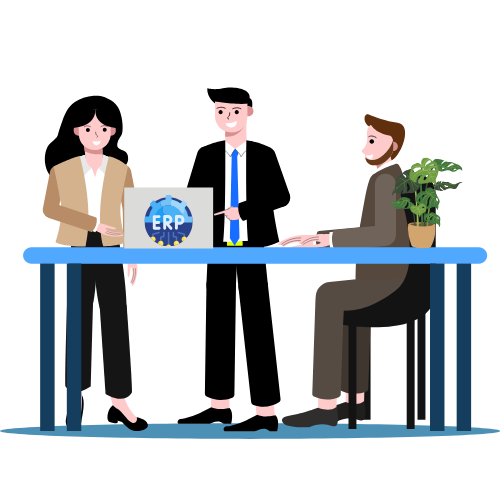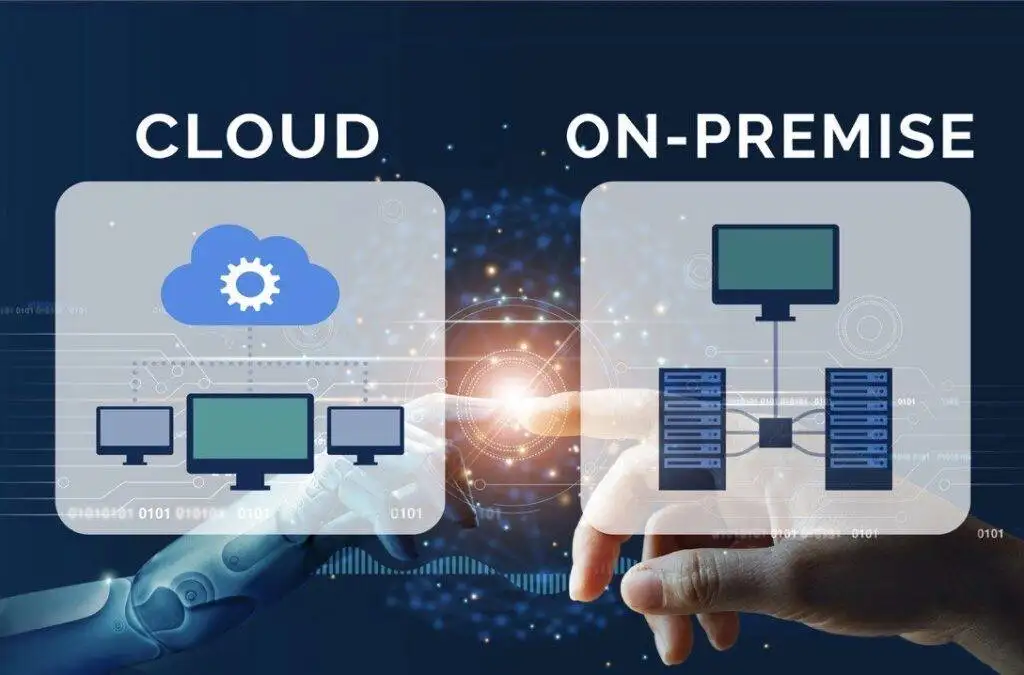Implementing an ERP system is a major milestone, but it’s what happens after go-live that determines true success. Many organisations face unexpected challenges during the post-implementation phase—from low user adoption to unclear ROI.
In this blog, we’ll explore the most common post-ERP system implementation challenges and share 7 practical solutions to help you get the most out of your investment.
Common Post-ERP Implementation Challenges and Practical Solutions
1. Low User Adoption
Even after a successful ERP implementation, many organisations struggle to get users to adopt the system. Employees do not fully embrace or consistently use the new ERP system after it goes live. They may resist change or revert to familiar methods, reducing the ERP system’s value. This is one of the most common and critical challenges organisations face after ERP implementation.
Why It Happens
How to Identify
Impact on the Business
How to Fix It
1. Provide Ongoing, Role-Specific Training
Training shouldn’t end at go-live. Regular, tailored sessions help employees stay up-to-date as the ERP system evolves. Focus on each team’s specific responsibilities so users gain practical knowledge relevant to their day-to-day tasks.
2. Build a Supportive Learning Culture
A supportive learning culture encourages employees to continuously improve their ERP system skills in a safe, collaborative environment.
3. Lead by Example
Have leadership and managers actively use the ERP system and champion learning efforts. When leaders engage with the system and support training initiatives, it sends a strong message across the organisation.
4. Normalise Learning
Make learning part of everyday work rather than a one-time event. Offer microlearning modules, monthly learning challenges or ‘ERP tip of the week’ emails to keep learning ongoing and low-pressure.
5. Recognise and Reward Learning
Acknowledge individuals or teams who show improvement or help others. Gamify learning or give shout-outs to ERP system ‘power users’ in internal communications.
6. Encourage Peer-to-Peer Learning
Create spaces for users to share knowledge like user forums, lunch-and-learn sessions or internal chat groups where employees can ask questions and exchange tips.
7. Offer Hands-On Support and Documentation
Make help easily accessible. Provide on-demand guides, video tutorials and a responsive helpdesk or ERP system champion network to assist users in real-time. Hands-on support reduces frustration and boosts user confidence.
8. Encourage User Feedback and Involvement
Actively listen to your users. Collect feedback regularly through surveys or team check-ins and involve employees in future updates or feature testing. When users feel heard, they’re more likely to stay engaged.
9. Communicate the ’What’s in It for Me’ Clearly
Employees are more likely to adopt the ERP system when they understand how it benefits them directly—whether that’s saving time, reducing manual work or improving access to information. Link system features to personal and team wins.
2. Lack of Clear ROI
After going live with an ERP implementation, many organisations hit a wall when it comes to proving its value. If you’re not tracking meaningful outcomes, you’ll likely face pushback from employees and leadership. Without clear ROI, the system feels like an expensive tool with little payoff — leading to poor adoption, underutilisation and frustration.
Why It Happens
How to Identify
Impact on the Business
How to Fix It
1. Lead with a Clear Change Management Strategy
Start with the ’why’. Communicate the ERP system’s benefits in terms everyone understands — time saved, easier reporting, faster decisions. Set clear expectations across departments and keep stakeholders in the loop as the system evolves.
2. Track Success Metrics Consistently
Define what success looks like (e.g., 20% faster reporting, fewer manual processes, cost savings). Use dashboards or regular check-ins to measure progress and adjust if needed. What gets measured gets improved and justified.
3. Run Regular Post-Go-Live Reviews
Don’t set and forget your ERP implementation. Schedule quarterly or biannual reviews to evaluate system performance. Gather user feedback, look at the data and check whether your original goals are being met. Use those insights to fine-tune and improve.
4. Make Employees Part of the Solution
Your users are your best resource for improving the system. Encourage ongoing feedback, involve them in testing new features and create channels for sharing what’s working and what’s not. When people feel heard, they stay engaged and your system keeps improving.

Want to get more from your ERP investment?
Discover how Galvinus can help you optimise performance, increase user adoption and unlock long-term ROI.
Take control of your ERP journey with confidence.
3. Process Misalignment
Your ERP implementation is live — but daily tasks still feel clunky, disconnected or harder than before. That’s a red flag because the system isn’t aligned with how your business operates. When workflows don’t flow, your ERP implementation ends up slowing people down instead of powering them up.
Why This Happens
How to Identify
Impact on the Business
How to Fix It
1. System Optimisation & Customisation
Don’t settle for a system that almost fits. Optimise and tailor your ERP system to work the way your teams do. Post-go-live is your chance to turn feedback into fixes and make the system work with your business, not against it.
2. Post-Go-Live Optimisation
Once your system is live, watch how people use it and where they struggle. Use that real-world insight to make smart changes: adjust configurations, simplify steps and clean up any friction points. Regular check-ins with users and performance data from ERP implementation can uncover quick wins that make a big difference.
3. Workflow-Aligned Customisations
Every team has its own rhythm. Modify the ERP system to reflect your actual processes — not a generic template. Custom dashboards, approval flows, role-specific screens or smart automations can transform how smoothly your team works. Tailored experiences drive better adoption and fewer errors.
4. Continuous System Enhancements
Your ERP implementation isn’t a ’set it and forget it‘ tool. Schedule regular reviews to ensure it evolves with your business. As goals, teams or regulations change, the system should change too. Keep collecting feedback, exploring updates and fine-tuning the setup to stay aligned and future-ready.

Free Checklist: Tackle the 7 Most Common ERP Challenges
We’ve also created a complete checklist to help you track all 7 key challenges covered in this blog.
4. Maintenance & Support Issues in ERP Systems
After you’ve successfully deployed an ERP system, you may still face ongoing maintenance and support challenges that threaten both the system’s functionality and user acceptance. These challenges often arise from unmonitored systems, outdated components or insufficient support structures. If you don’t address these issues, you could encounter technical problems, inefficiencies and security risks that prevent you from fully realising the benefits of your ERP implementation.
Why This Happens
How to Identify
Impact on Business
How to Fix It
1. Timely Issue Resolution
When an issue arises, immediate action is key. Quick fixes prevent minor problems from escalating into bigger disruptions after ERP implementation. Establish a responsive ERP system support team that is available to handle issues in real time. The quicker the response, the faster you can resolve the issue and avoid downtime.
2. Regular Updates & Upgrades
A system that isn’t updated is a vulnerable system. Keep your ERP system secure and efficient with regular updates and upgrades after ERP implementation. Regularly install security patches, system fixes and feature upgrades to ensure the system remains secure and aligned with evolving business needs.
3. Performance Monitoring & System Health Checks
You need to keep an eye on your ERP system’s health to catch issues before they become problems. Regular monitoring will ensure everything runs smoothly post ERP implementation. Use performance dashboards to track key performance metrics, such as system uptime, speed and error rates, to identify potential issues early on.
5. Data Quality Problems
Your ERP implementation is running, but you’re noticing operational inefficiencies and poor decision-making. It’s a sign that your data quality isn’t up to par. Poor data accuracy, incomplete records and inconsistencies are undermining your system’s effectiveness.
Why This Happens
How to Identify
Impact on Business
How to Fix It
1. Data Integrity
Ensure your teams enter accurate and complete data into the system post ERP implementation. Regularly inspect and maintain the data to align with actual business operations. This helps you build a solid foundation for decision-making.
2. Data Governance Frameworks
A robust data governance framework will provide a structure for maintaining high data quality after ERP implementation. Define responsibilities and set clear rules for how data is managed across your organisation.
3. Data Validation and Accuracy Audits
Validation is crucial to catching data issues early before they escalate. Schedule regular audits to confirm the accuracy of your data and correct errors before they affect business operations.
4. Enhanced Analytics and Reporting Reliability
A well-maintained ERP system provides trustworthy analytics that drives better decision-making. By improving data quality, you ensure that your analytics and reporting tools offer accurate insights.
6. Managing Change Fatigue
Your ERP implementation is up and running, but employees are feeling overwhelmed and disengaged. When change fatigue sets in, it can halt progress and lead to resistance, even though the system is designed to improve efficiency. If employees seem burnt out or are struggling to keep up with constant changes, it’s a clear sign that change fatigue is becoming a problem.
Why This Happens
How to Identify
Impact on Business
How to Fix It
1. Transparent Post-Go-Live Updates
After going live, regular updates are key to keeping everyone in the loop. Clear communication about new system changes, improvements and upcoming updates reduces uncertainty and keeps employees confident in the system.
2. Employee Feedback Loops and User Forums
Set up feedback loops and user forums where they can share concerns, suggestions and insights. This gives them a voice and makes them feel part of the process. Act on feedback and show employees that their input is valued by addressing concerns and making necessary adjustments.
3. Progressive Rollout of New Features
Instead of overwhelming employees with a flood of changes, roll out new features and updates incrementally after ERP implementation. This approach allows teams to get used to each change at a manageable pace.
4. Recognition and Reward Programs for ERP Champions
Recognising and rewarding employees who excel with the new system can motivate others to adopt it with enthusiasm.
7. Underutilisation of Features
Your ERP system is running, but only a small portion of its capabilities is being used. This is a clear sign of underutilisation. If you notice that employees are only using basic features and overlooking the more advanced functionalities, it’s a problem. When essential process improvements are being missed or efficiency gains are not being realised, it’s time to take action and tap into the full potential of your ERP system.
Why This Happens
How to Identify
Impact on Business
How to Fix It
1. Technology-Driven Optimisation:
- Automate repetitive tasks to free up time for higher-level work.
- Leverage the ERP system’s integration capabilities to scale your system as the business grows.
- Explore and implement automation in areas that currently rely on manual processes.
2. Insight-Driven Decisions:
- Utilise the built-in analytics of your ERP system to identify inefficiencies and improve processes.
- Use real-time data to make more timely, informed decisions across the organisation.
- Monitor and adjust based on insights to continually improve operational performance.
3. User-Centred Innovation:
- Provide targeted training on underutilised ERP features to empower employees.
- Create feedback loops and user-driven improvements to increase engagement and system adoption.
- Encourage cross-departmental collaboration to identify areas where the ERP’s advanced features can be used.
ERP implementation is a major achievement—but it’s only the beginning.
The real value of your ERP investment is unlocked after go-live, through continuous improvement, user engagement and strategic optimisation.
Whether it’s low user adoption, poor data quality, change fatigue or underused features, each post-implementation challenge is a chance to fine-tune your system and ensure it truly aligns with your business goals.
The best part? You don’t have to tackle it alone.
With the right support, tailored training and a clear post-implementation strategy, your organisation can turn these challenges into opportunities—and transform your ERP system into a powerful engine for efficiency, insight and long-term growth.
Why Choose Galvinus
FAQs
How do we keep improving our ERP system post-go-live?
What should we do if the ERP system doesn’t fit our business processes?
How to manage ERP maintenance and ongoing support?
When should we consider post-implementation optimisation services?
How often should an ERP system be upgraded or updated?
Which of these challenges are you facing? Drop a comment or reach out—we’d love to hear from you.


